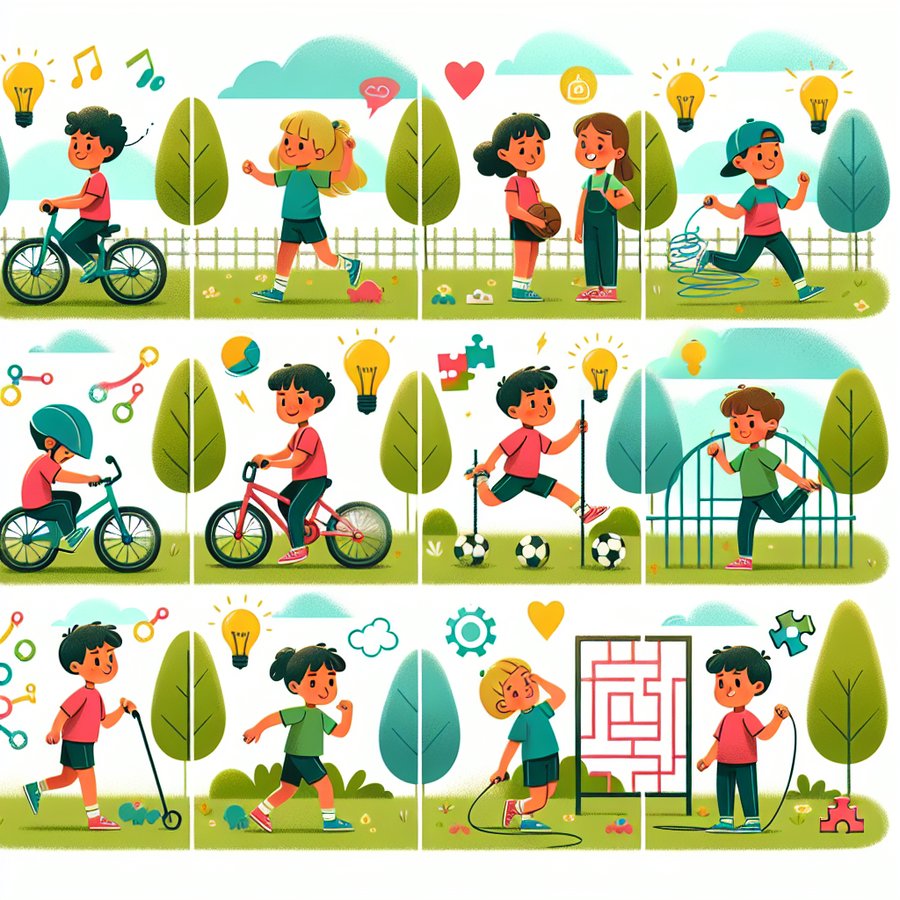Understanding how physical activity influences cognitive development is pivotal for parents and educators aiming to nurture well-rounded, intelligent, and healthy children. The connection between the body’s movements and the brain’s growth isn’t just fascinating; it’s crucial for developmental milestones. Let’s embark on an exploration of this vital relationship.
The Science Behind Movement and Mind
Scientific studies consistently reveal that regular physical activity significantly impacts children’s cognitive abilities, including attention, memory, and problem-solving skills. One reason is the increase in blood flow to the brain during exercise, which enhances neural connectivity and brain function.
Furthermore, exercising releases endorphins and other growth factors that support neural health, plasticity, and the growth of new brain cells. This biological process is a cornerstone in understanding how physical activity influences cognitive development, fostering an environment where learning and creativity flourish.
How Physical Activity Influences Cognitive Development
Physical activities, from simple playground games to structured sports, lay the foundation for complex cognitive functions. These activities improve concentration, memory, and even the ability to navigate complex social situations. For example, team sports not only build physical endurance but also teach strategic thinking, leadership, and cooperation among peers.
Moreover, activities that require balancing, coordination, and rhythm, such as dancing or gymnastics, are particularly effective in enhancing cognitive abilities. They demand focus, precision, and quick decision-making, which translate into improved academic performance and problem-solving skills outside the gym or dance studio.
Practical Ways to Integrate Physical Activity into Daily Routines
Integrating physical activity into a child’s daily routine doesn’t have to be a chore. It can be as simple as walking or biking to school, which not only contributes to physical health but also enhances attention and readiness to learn upon arrival. Additionally, incorporating playful activities like jumping rope, playing tag, or navigating obstacle courses can make exercise both effective and enjoyable.
Parents and educators can also encourage participation in team sports or dance classes, which provide structured opportunities for physical activity while promoting social interaction and teamwork. For families looking for home-based activities, online resources offer a plethora of exercise videos and games designed to keep children moving and engaged.
To learn more about integrating physical activities and their benefits, visit this external link for guidelines and recommendations.
By understanding how physical activity influences cognitive development, parents and educators can harness the power of movement to boost learning, creativity, and overall well-being in children. The journey towards a brighter, healthier future begins with fostering a love for physical activity from a young age.
For further reading on supporting your child’s development, consider exploring our articles on Encouraging Self-Feeding Skills in Infants, Activities to Promote Empathy and Social Understanding in Toddlers, and The Role of Outdoor Play in Physical and Cognitive Development.













